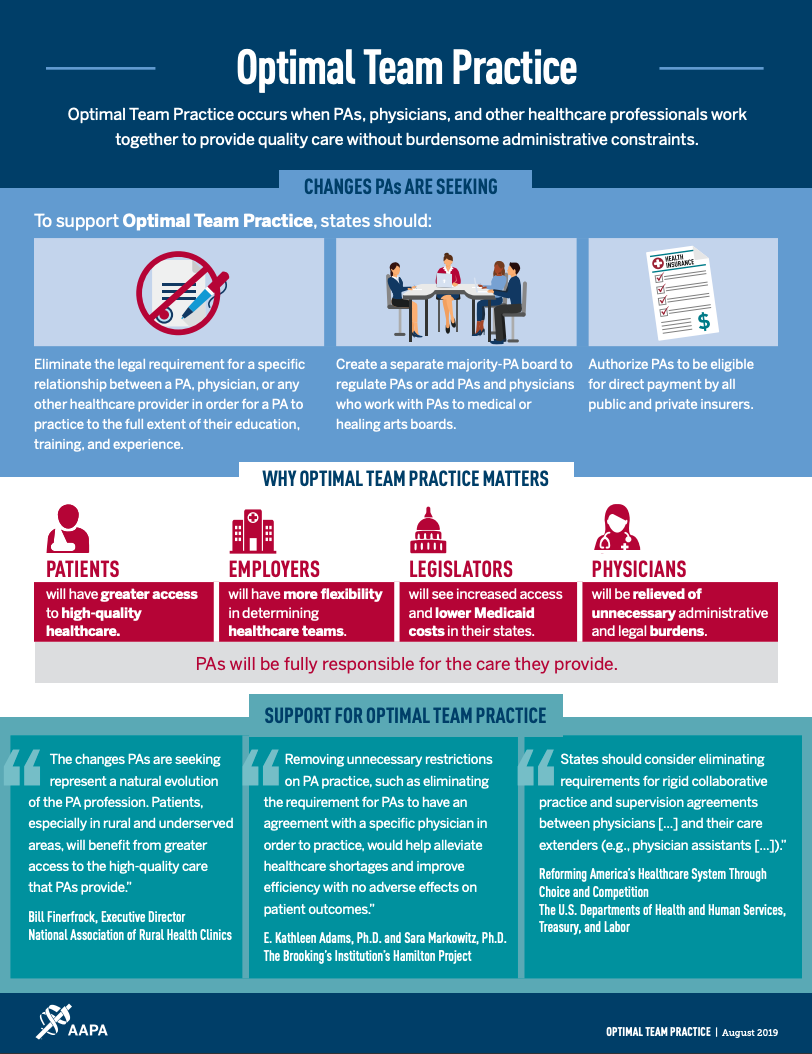Optimal Team Practice (OTP)
Source: AAPA https://www.aapa.org/download/61449/ |
What Is Optimal Team Practice? Optimal Team Practice occurs when PAs, physicians, and other healthcare professionals work together to provide quality care without burdensome administrative constraints. To support Optimal Team Practice, states should: eliminate the legal requirement for a specific relationship between a PA, physician, or any other healthcare provider in order for a PA to practice to the full extent of their education, training and experience; create a separate majority-PA board to regulate PAs or add PAs and physicians who work with PAs to medical or healing arts boards; and authorize PAs to be eligible for direct payment by all public and private insurers. |
Are PAs ready to Practice without a specific relationship with a physician? Absolutely. PA practice has been extensively studied and evaluated, and PAs have been found to provide high-quality patient care. Even under existing administratively burdensome laws and regulations, many — if not most — PAs have their own panels of patients and often serve as a patient’s primary healthcare provider. State laws and regulations have simply not kept pace with the changes in the healthcare marketplace or the changing needs of patients and PA employers. Whether a PA is highly experienced, a new graduate, or changing the specialty area in which they work, they would continue to practice in teams with physicians, and their scope of practice would be determined at the practice level. If a patient’s condition falls outside of a PA’s training, education, and experience, a PA will still consult with other healthcare providers and make referrals when appropriate. If they don’t, that PA will be subject to disciplinary action by the state medical board, just as any other medical provider would be. Under Optimal Team Practice, a newly licensed PA would, at their place of employment, be able to report to or be supervised by a physician, a senior PA, or a chief PA rather than having a specific relationship with a physician. Every PA and PA employer will continue to be responsible for assuring that there is adequate access to consultation and back-up. Removing the requirement for a specific relationship between a PA and a physician does not diminish those responsibilities. |

